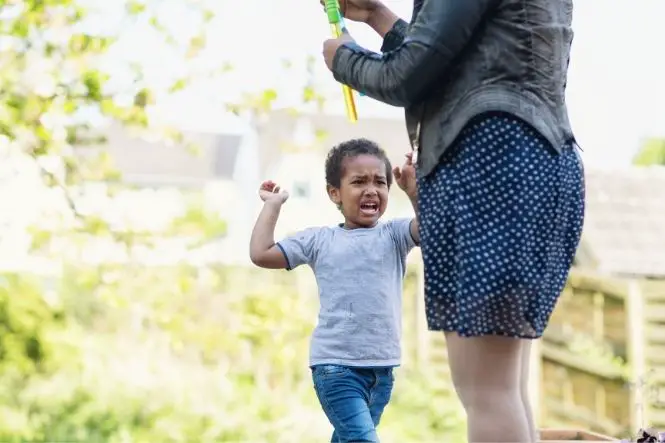Sleep disruptions are incredibly common in children, which is unfortunate because sleep is important for growing kids. Not only do children lead active lives and need time to rest and recover, but it is believed that their brains also use sleep to sort through and make sense of information as well as solve problems. Understanding children and sleep cycles, common sleep disruptions and good sleep habits should help you manage your children’s sleep disruptions and get them back to a good night’s sleep as soon as possible.
Sleep Cycles and Children
There are two types of sleep, and kids alternate between the two in a continuous cycle just as adults do. Non-rapid Eye Movement (NREM) sleep is a deeper sleep in which energy is restored and general tissue growth and repair occurs. Rapid Eye Movement (REM) sleep is a lighter sleep in which the eyes move about quickly and kids dream. This is the type of sleep in which children are more likely to wake up. Infants go through a complete sleep cycle, REM and NREM sleep, in about an hour. For children aged 4 or so, a complete sleep cycle takes about 90 minutes. Individualised sleep cycles may explain why children seem to experience sleep disruptions at particular times of night – it may be that the problems occur at a specific point in a sleep cycle.
Common Sleep Disruptions and Children
By the time children are school aged sleep disruptions become common. Not only do children’s days become more regimented, but their sleep does too because they need to be awake at a certain time rather than following a natural sleep pattern. Children also have broader imaginations at this point, which means that night time fears and nightmares occur more often. Night terrors, sleep walking, bedwetting, an inability to sleep (insomnia), sleep apnea, not wanting to sleep alone in a room, not wanting to sleep alone in a bed, an inability to sleep without a favourite toy or security item and teeth grinding are all common sleep disruptions in children. If children experience any of these disturbances and are unable to fall asleep at night, have trouble waking up in the morning, seem sleepy throughout the day or require an extended nap then their sleep, not to mention growth and development, is being affected.
Children and Good Sleep Habits
Putting together a bedtime routine should be the first line of defence against sleep disruptions. Observe your child for a few evenings in a row and settle on a bedtime as the time at which they seem slower, more irritable and more tired. Aim to start the bedtime routine about 30 minutes prior to this time. Have your child bathe, or at least brush teeth, face and hair. Have your child change into pyjamas and get into bed before you visit them to chat or read a book. Install black-out shades if your child’s room is too light at night, and invest in a small night-light if your child is afraid of the dark. If your child experiences disruptions after falling asleep, such as bedwetting, sleepwalking or nightmares, then discuss what routine the two of you will implement to deal with these disruptions. Continue these routines for several weeks and see whether it helps your child’s sleep disruptions. If not, consider visiting a GP for more information about your child’s specific sleep needs.
Sleep disruptions are common in children but they are not good for them. Sleep disruptions get in the way of mental and physical development, not to mention leave your children tired and cranky the next day. Understanding children’s sleep cycles, recognising common children’s sleep disruptions and encouraging good sleep habits should help to alleviate common sleep disruptions in children.


